Discover Keen on Yoga Podcast
Keen on Yoga Podcast

Keen on Yoga Podcast
Author: Adam Keen
Subscribed: 152Played: 7,579Subscribe
Share
© All rights reserved
Description
Adam Keen engages in a deep level of discussion with Ashtanga yoga teachers as well as others involved in inquiry, wellness, diet, or simply people he finds interesting.
The in-depth discussions and honest conversations are often surprising. Prepare to have your thoughts expanded.
If you enjoy the podcast and would like to support us you can do so by liking, sharing, rating and donating at https://keenonyoga.com/donate/
The in-depth discussions and honest conversations are often surprising. Prepare to have your thoughts expanded.
If you enjoy the podcast and would like to support us you can do so by liking, sharing, rating and donating at https://keenonyoga.com/donate/
202 Episodes
Reverse
Adam explores the fundamental definitions of yoga, emphasizing it as a process of subtraction rather than addition. He contrasts Eastern and Western philosophies regarding self-perception and the inherent nature of individuals, highlighting the confusion that arises from overcomplicating our experiences. Adam Shares · Yoga is fundamentally about subtraction, not addition. · Eastern philosophy views us as inherently whole. · Western philosophy believes we are lacking and need to add more. · The confusion in our lives comes from adding too much. · Self-awareness is key to understanding our true nature. · The essence of yoga is clarity and simplicity. · Philosophical differences shape our understanding of self. · We often complicate our experiences unnecessarily. · True understanding comes from seeing ourselves as we are. · Yoga helps in removing the layers of confusion.
Adam interviews James Russell, a PhD student and yoga teacher, about the origins and evolution of Surya Namaskar (Sun Salutation) and its connections to Indian wrestling and nationalism. They discuss the historical context of yoga practices, the significance of Shat Karma in Hatha Yoga, and the impact of physical culture on modern yoga. Russell shares insights from his research and fieldwork in India, highlighting the importance of traditional practices that are often overlooked in contemporary yoga. Support the Podcast: Buy us a coffee: https://www.buymeacoffee.com/infoRf James Shares · Surya Namaskar has origins that may date back to ancient prostrations. · The practice of yoga has evolved significantly over centuries. · James Russell's research connects yoga with Indian wrestling traditions. · The Raj of Aund played a crucial role in modernizing Surya Namaskar. · Shat Karma practices are essential in traditional Hatha Yoga. · Modern yoga often neglects the historical context of its practices. · Nationalism influenced the development of physical culture in India. · Yoga's evolution is a blend of various cultural influences. · Understanding yoga requires a deep dive into its historical roots. · The significance of traditional practices is often lost in contemporary yoga. James Russell Article on Sūryanamaskār: Tracing the Origins of Yoga's Sun Salutation | Journal of Yoga Studies Instagram: @jamesrussellyoga Website: www.jamesrussellyoga.com Keen on Yoga Website: www.keenonyoga.com Instagram: @keen_on_yoga | @adam_keen_ashtanga Retreats with Adam: https://www.keenonyoga.com/ashtanga-yoga-retreats Become a Patron: https://www.keenonyoga.com/patrons/ Linktree: https://linktr.ee/Keenonyoga
In a switch of roles, Richard Rosen interviews Adam Keen for this podcast. They explore the multifaceted world of yoga, discussing Adam's personal journey into yoga, the differences between Ashtanga and Patanjali's teachings, and the importance of teaching methodology. They delve into the significance of breath and bandhas in practice, the philosophical underpinnings of yoga, and the essential qualities of a good yoga teacher. Throughout the dialogue, they emphasize kindness, patience, and the need for mentorship in the yoga community. Support the Podcast, Buy us a coffee: https://www.buymeacoffee.com/infoRf Richards Book: Yoga FAQ Richard Rosen Instagram: @richardrosenyoga Keen on Yoga Website: www.keenonyoga.com Follow Adam: @keen_on_yoga | @adam_keen_ashtanga Retreats with Adam: https://www.keenonyoga.com/ashtanga-yoga-retreats Linktree: https://linktr.ee/Keenonyoga Become a Patron: https://www.keenonyoga.com/patrons/ Key Points · Adam Keen shares his journey into yoga, starting from a background of mental health challenges. · The conversation highlights the differences between Ashtanga yoga and Patanjali's teachings. · Teaching methodology in yoga is crucial, with an emphasis on kindness and patience. · Breath and bandhas play a significant role in yoga practice, with modern interpretations. · The meaning of yoga extends beyond asana, encompassing a holistic approach to life. · Mentorship is essential in the yoga community to support teachers and students alike. · Adam discusses the challenges of yoga certification and the focus on physical ability. · The importance of being oneself as a teacher and not trying to emulate others. · Philosophical discussions around the meaning of life and yoga are explored. · Books and literature are recommended as valuable resources for understanding yoga.
Elliott Goldberg, author of seminal book The Path of Modern Yoga, delves into the history and evolution of modern yoga, exploring the contributions of key figures such as Sri Yogendra and Krishnamacharya. They discuss the cultural and nationalistic influences that shaped yoga's development, the transition from traditional practices to modern interpretations, and the lasting legacy of these pioneers in contemporary yoga. The dialogue emphasizes the importance of understanding yoga's roots while also considering its future in a rapidly changing world. The Path of Modern Yoga, The History of an Embodied Spiritual Practice Support the Podcast, Buy us a coffee: https://www.buymeacoffee.com/infoRf Key Notes · Yoga as we know it is a modern construct. · Sri Yogendra was a pioneer in teaching modern yoga. · Krishnamacharya's influence shaped contemporary yoga practices. · The role of nationalism played a significant part in yoga's evolution. · Madhava Saji introduced healing methods in yoga. · Krishnamacharya's teaching style was unique and influential. · The flowing aspect of yoga was a response to modernism. · Physical culture influenced the development of yoga. · Krishnamacharya's legacy continues through his students. · The future of yoga is a blend of tradition and modernity.
Adam addresses commonly asked questions from his workshops and retreats, providing insights into personal practice, the future of Ashtanga yoga, breathing techniques, teacher-student dynamics, and the role of yoga philosophy. He emphasizes the importance of adapting practice to individual needs, staying motivated, and finding personal meaning in yoga. Adam also shares personal updates and reflections on his journey with yoga. Adam Shares: · Common questions arise frequently in yoga workshops. · Guidance on practice should focus on understanding postures. · Variation in practice keeps it engaging and fun. · Breathing techniques should prioritize diaphragmatic movement. · Teacher-student relationships should be open and communicative. · Shorter practices can still be effective and beneficial. · Asanas serve a purpose beyond meditation. · Yoga philosophy is independent of physical practice. · Finding personal meaning in yoga is essential for motivation. · Yoga practice should adapt to individual lifestyles and responsibilities. Keen on Yoga Become a Patron: https://www.keenonyoga.com/patrons/ Linktree: https://linktr.ee/Keenonyoga Website: www.keenonyoga.com Follow Adam: @keen_on_yoga | @adam_keen_ashtanga Retreats with Adam: https://www.keenonyoga.com/ashtanga-yoga-retreats/ Support: Buy us a coffee: https://www.buymeacoffee.com/infoRf
Sravana Borkataky-Varma and Anya Foxen discuss their book, 'Serpent's Tale: Kundalini and the History of Experience.' They explore the historical context of Kundalini practices, the diverse interpretations of Kundalini energy, and the symbolism associated with it. The discussion delves into the role of serpents in both Eastern and Western traditions, the methods of experiencing Kundalini, and the influence of Gopi Krishna on modern understandings of Kundalini. The conversation also touches on the cultural contexts that shape personal experiences of Kundalini and the evolution of Kundalini teachings in the 20th century. Sravana & Anya Share: · Kundalini Yoga is accessible to the average person. · The book explores the historical context of Kundalini practices. · Kundalini is not a singular concept but has diverse interpretations. · Symbolism in Kundalini practices varies between fire and water. · Serpents hold different meanings in Eastern and Western traditions. · Experiencing Kundalini can occur through various methods, not just asana. · Gopi Krishna's experiences shaped modern interpretations of Kundalini. · The 20th century saw a rise in diverse Kundalini teachings. · Cultural contexts influence personal experiences of Kundalini. · The book emphasizes the collective nature of Kundalini practices. Buy The Book: The Serpents Tale: Kundalini, Yoga and the History of an Experience Sravana Borktaky-Varma Instagram: @borkatakyvarmaspeaks Website: https://sravanaspeaks.com Anya Foxen Instagram: @profanechka Website: www.anyafoxen.com Keen on Yoga Website: www.keenonyoga.com Follow Adam: @keen_on_yoga | @adam_keen_ashtanga Retreats with Adam: https://www.keenonyoga.com/ashtanga-yoga-retreats Support: Buy us a coffee: https://www.buymeacoffee.com/infoRf Become a Patron: https://www.keenonyoga.com/patrons/ Linktree: https://linktr.ee/Keenonyoga
John Campbell shares his journey through the world of Ashtanga Yoga and Buddhism, detailing his experiences in Mysore, the influence of Pattabhi Jois, and the philosophical underpinnings of yoga. He discusses the integration of Tibetan practices into his teaching and the evolution of yoga in the modern context. John emphasizes the importance of self-knowledge and the transformative power of yoga, while also addressing the challenges of mixing traditions. The conversation concludes with insights into the future of yoga and upcoming events. Instagram: @dr.john.campbell | tibethouse.us Nov 8-9, 2025, Urban Vajrayoga™ Retreat with Professor Robert Thurman and Dr John Campbell: https://www.yogacampus.com/courses/events-and-continuing-professional-development/urban-vajrayoga-retreat Dec 5-7, 2025, Vajra Yoga Winter Immersion Retreat - Sponsored by Tibet House US: https://menla.org/retreat/vajra-yoga-winter-immersion-retreat/ John Shares How he spent years in Mysore, deeply influenced by the experience. · The early days of Ashtanga Yoga were marked by a close-knit community. · Pattabhi Jois's teachings had a profound impact on John's practice. · The philosophical aspects of yoga are as important as the physical practice. · Self-knowledge is a central theme in both yoga and Buddhism. · Vajrayoga integrates Tibetan practices into traditional yoga. · The evolution of yoga practices reflects changing societal contexts. · Teaching yoga today requires a balance of tradition and innovation. · John emphasizes the importance of kindness and open heartedness in practice. · The future of yoga involves exploring diverse practices and lineages. Chapters 00:00 Introduction to John Campbell and His Journey 02:02 Early Experiences in Mysore and Ashtanga Yoga 06:04 The Influence of Patabi Joyce and Adjustments in Practice 11:54 Philosophical Insights on Self and Ashtanga Yoga 18:05 The Role of Self-Knowledge in Yoga Practice 24:00 Buddhism, Vedanta, and Their Impact on Asana Practice 37:38 The Interconnectedness of Yoga Traditions 40:12 Hatha Yoga and Its Techniques 42:16 The Three Dimensions of Yoga Practice 49:30 Mythology and Authenticity in Yoga 55:02 The Role of Bhavana in Yoga Practice 01:00:56 Integrating Tibetan Yoga into Practice 01:06:51 The Evolution of Yoga in Modern ContextJohn Campbell Keen on Yoga Website: www.keenonyoga.com Follow Adam: @keen_on_yoga | @adam_keen_ashtanga Retreats with Adam: https://www.keenonyoga.com/ashtanga-yoga-retreats Support: Buy us a coffee: https://www.buymeacoffee.com/infoRf Become a Patron: https://www.keenonyoga.com/patrons/ Linktree: https://linktr.ee/Keenonyoga
Adam explores the concept of modern yoga, its historical roots, and how it differs from traditional practices. He discusses the evolution of asana, the significance of influential figures like Krishnamacharya, B.K.S. Iyengar, and Patabi Joyce, and the accessibility of modern yoga. Keen emphasizes the importance of personal experience in yoga and the need to embrace its diverse traditions while acknowledging the political and cultural contexts that have shaped its development. www.keenonyoga.com | @adam_keen_ashtanga Key Notes · Modern yoga is defined by a focus on asana. · Asana has been used for ages, no doubt. · Asana is used as an auxiliary practice. · Modern yoga is accessible to everyone. · Yoga is a doorway in towards the self. · Yoga has always been an evolution. · Asana is a symbol of modern Hinduism. · Asana is a practice in itself now. · Yoga is a diverse body of ideas. · Personal experience in yoga is crucial.
Jock Orton, the founder of Lime House Yoga in Cornwall, UK, shares his transformative journey from a serious snowboarding accident that led him to yoga, to building a thriving yoga community. He discusses the challenges of running a yoga studio, especially during the COVID-19 pandemic, and how he adapted his practices to meet the needs of his students. Jock also reflects on the importance of nature, community, and the healing power of yoga, as well as his aspirations for the future of Limehouse Yoga. www.limehouseyoga.com | @limehouseyoga Key Points · Jock Orton's journey into yoga began after a serious snowboarding accident. · Limehouse Yoga serves as a community hub in Cornwall, offering classes and retreats. · The importance of adapting yoga practices to individual needs and abilities. · COVID-19 forced many yoga studios to pivot to online classes, changing the landscape of yoga. · Jock emphasizes the healing power of yoga for both physical and mental well-being. · Building a supportive community is crucial for the success of a yoga studio. · The challenges of running a yoga business include financial pressures and navigating local regulations. · Jock's approach to Ashtanga yoga is flexible and focuses on individual needs rather than strict adherence to the sequence. · Nature and gardening are significant sources of inspiration and relaxation for Jock. · Jock aims to pass on the reins of Limehouse Yoga to the next generation of teachers.
Ep 243 Adam Keen – My Ashtanga Teaching Manifesto Adam addresses the theme of abuse in Ashtanga yoga in light of more recent allegations. He explores the contrasting archetypes of teachers in the context of Ashtanga yoga, focusing on the strict adherence to tradition and the implications for student progression. Finally he lays out his personal Ashtanga teaching code of conduct and what students can expect when they come to a class, retreat, course or workshop with him. www.keenonyoga.com | @adam_keen_ashtanga LISTEN Apple podcast: https://podcasts.apple.com/us/podcast/keen-on-yoga-podcast/id1509303411 Spotify: https://open.spotify.com/show/5iM9lcw52JskHUZ2eFvVxN WATCH https://www.youtube.com/@keenonyoga SUPPORT Subscribe, like and share our videos Buy us a coffee: https://www.buymeacoffee.com/infoRf Patrons €10 per month: https://www.keenonyoga.com/patrons/ FOLLOW Website: www.keenonyoga.com Instagram: @keen_on_yoga | @adam_keen_ashtanga Linktree: https://linktr.ee/Keenonyoga Key Points · A strict teacher is often seen as a good teacher. · Traditional methods can create deep fault lines in education. · Commitment to the Ashtanga method is paramount for some teachers. · Teachers who shout at students may be deeply committed to tradition. · The purity of the Ashtanga method is a significant focus for some instructors. · Sacrifice is often required to achieve advanced levels in yoga. · The number of times a teacher has been to Mysore can indicate their commitment. · Respect for traditional methods can lead to rigid teaching styles. · Student progression may be hindered by strict adherence to perfection. · The balance between tradition and flexibility is crucial in teaching.
Elizabeth Kadetsky discusses her book 'First There Is A Mountain', detailing her experiences with Iyengar Yoga and the cultural dynamics surrounding it. She reflects on her journey to writing the book, her experiences in India, and the complexities of dietary practices within the yoga community. The discussion also touches on the historical context of Hindu nationalism, Iyengar's legacy, and the evolution of yoga practices over time. Kadetsky shares her insights on the nuances of yoga culture, the impact of her research, and her current approach to yoga. www.elizabethkadetsky.com | @ekadetsky LISTEN Apple podcast: https://podcasts.apple.com/us/podcast/keen-on-yoga-podcast/id1509303411 Spotify: https://open.spotify.com/show/5iM9lcw52JskHUZ2eFvVxN WATCH https://www.youtube.com/@keenonyoga SUPPORT Subscribe, like and share our videos Buy us a coffee: https://www.buymeacoffee.com/infoRf Patrons €10 per month: https://www.keenonyoga.com/patrons/ FOLLOW Website: www.keenonyoga.com Instagram: @keen_on_yoga | @adam_keen_ashtanga Linktree: https://linktr.ee/Keenonyoga Key Points · Elizabeth Kadetsky is a writer and professor at Penn State. · Her book 'First There Is A Mountain' was published in 2004. · Kadetsky's first trip to India was in 1997, leading to her research on Iyengar Yoga. · Iyengar Yoga emphasizes alignment and the use of props. · Dietary practices in yoga can reflect cultural and communal identities. · Kadetsky experienced cultural shock when practicing yoga in India compared to the West. · Iyengar's influence on yoga is significant but complex, involving historical and cultural dynamics. · The rise of Hindu nationalism has impacted the perception of yoga in India. · Kadetsky sees her book as a reflection of its time, capturing a specific moment in yoga history. · Her current yoga practice focuses more on meditation and breath rather than strict physical exercise.
Ep 241 Adam Keen – Healing Through Touch in Yoga Adam explores the complex and evolving role of touch in yoga practice. He discusses the historical context of touch in yoga, the healing potential of positive touch, and the challenges of safeguarding both students and teachers in a modern environment where boundaries have shifted. Keen emphasizes the importance of understanding good touch versus bad touch, advocating for a respectful and sensitive approach to physical interaction in yoga classes. He concludes with a call for thoughtful engagement with touch, recognizing its significance while also acknowledging the risks involved. www.keenonyoga.com | @adam_keen_ashtanga LISTEN Apple podcast: https://podcasts.apple.com/us/podcast/keen-on-yoga-podcast/id1509303411 Spotify: https://open.spotify.com/show/5iM9lcw52JskHUZ2eFvVxN WATCH https://www.youtube.com/@keenonyoga SUPPORT Subscribe, like and share our videos Buy us a coffee: https://www.buymeacoffee.com/infoRf Patrons €10 per month: https://www.keenonyoga.com/patrons/ FOLLOW Website: www.keenonyoga.com Instagram: @keen_on_yoga | @adam_keen_ashtanga Linktree: https://linktr.ee/Keenonyoga Key Points · Touch in yoga has evolved significantly over the decades. · Modern boundaries around touch have made it a contentious issue. · Positive touch can aid in healing from past negative experiences. · Consent cards and verbal agreements have limitations. · Good touch should feel affirming and supportive, not corrective. · Teachers must navigate touch with sensitivity and respect. · Physical adjustments can sometimes lead to injury or discomfort. · Building a relationship with students is essential before using touch. · Feedback mechanisms are crucial for ensuring safe touch practices. · Touch should enhance the yoga experience, not detract from it.
Ep 240 Tias Little – Yoga of the Subtle Body Adam speaks with Tias Little about the intricate relationship between yoga, anatomy, and the subtle body. Tias shares his extensive experience in yoga and meditation, discussing the importance of understanding the physical and energetic anatomy of the body. They explore various topics including the significance of the feet, the midline, bandhas, the psoas and diaphragm connection, the adrenal system, and the role of the heart in feeling. Tias emphasizes the need for humility in practice and the importance of fluid dynamics for longevity, ultimately leading to a deeper understanding of Samadhi and the journey inward. www.prajnayoga.com | @prajnayoga Book: Yoga of the Subtle Body: A Guide to the Physical and Energetic Anatomy of Yoga YOUTUBE https://www.youtube.com/@keenonyoga SUPPORT Subscribe, like and share our videos Buy us a coffee: https://www.buymeacoffee.com/infoRf Patrons €10 per month: https://www.keenonyoga.com/patrons/ FOLLOW Website: www.keenonyoga.com Instagram: @keen_on_yoga | @adam_keen_ashtanga Linktree: https://linktr.ee/Keenonyoga Key Points · The subtle body is a crucial aspect of yoga practice. · Understanding anatomy enhances the practice of yoga. · The feet serve as the foundation for the entire body. · The midline connects the ground to the sky, embodying balance. · Bandhas are about engagement and release, not just holding. · The psoas and diaphragm are interconnected in movement and breath. · The adrenal system plays a significant role in our energy levels. · Cultural reflections on yoga can inform our practice. · The sacrum is central to many yoga postures and movements. · Fluid dynamics in the body are essential for health and longevity.
Carolyn Williams, a science journalist and author speaks about the intricate connections between the mind and body, particularly focusing on interoception, the gut-brain axis, and the role of movement in mental health. They explore how our internal body signals influence our emotions, the importance of the vagus nerve, and the impact of hypermobility on anxiety. Carolyn shares insights from her research and personal experiences, emphasizing the need for daily movement and the potential for creativity through physical activity. The discussion highlights the evolving understanding of these concepts in both scientific and cultural contexts. www.carolinewilliams.net | @carolinewilliams_science YOUTUBE https://www.youtube.com/@keenonyoga SUPPORT Subscribe, like and share our videos Buy us a coffee: https://www.buymeacoffee.com/infoRf Patrons €10 per month: https://www.keenonyoga.com/patrons/ FOLLOW Website: www.keenonyoga.com Instagram: @keen_on_yoga | @adam_keen_ashtanga Linktree: https://linktr.ee/Keenonyoga Key Points · The mind and body are interconnected, influencing each other constantly. · Interoception is the awareness of internal body signals and is crucial for emotional regulation. · Experiments show that expectations can alter physical sensations, impacting mental health. · The gut plays a significant role in our overall health and emotional well-being. · The vagus nerve is more complex than previously thought, with many sensory functions. · Hostage negotiators use their sensitivity to body signals to make decisions in high-pressure situations. · Movement is essential for mental health and can enhance creativity. · Hypermobility can lead to anxiety due to physiological responses to movement. · Strength training can improve self-efficacy and confidence in one's body. · Daily movement snacks can enhance overall well-being and prevent sedentary behavior.
Adam explores the legacy of Krishnamacharya, the father of modern yoga, and the impact of his teachings on contemporary practices. He discusses the influence of Krishnamacharya's students, Pattabhi Jois and BKS Iyengar, and how their interpretations differ from his original teachings. Keen emphasizes the importance of understanding the context in which Krishnamacharya taught and how his methods evolved over time. He also delves into the innovations in yoga postures and the myth surrounding the Yoga Karunta, highlighting the multifaceted nature of Krishnamacharya's legacy and its implications for modern yoga practice. www.keenonyoga.com | @adam_keen_ashtanga PODCAST Apple podcast: https://podcasts.apple.com/us/podcast/keen-on-yoga-podcast/id1509303411 Spotify: https://open.spotify.com/show/5iM9lcw52JskHUZ2eFvVxN YOUTUBE https://www.youtube.com/@keenonyoga SUPPORT Subscribe, like and share our videos Buy us a coffee: https://www.buymeacoffee.com/infoRf Patrons €10 per month: https://www.keenonyoga.com/patrons/ FOLLOW Website: www.keenonyoga.com Instagram: @keen_on_yoga | @adam_keen_ashtanga Linktree: https://linktr.ee/Keenonyoga Key Points · Krishnamacharya is considered the father of modern yoga. · His teachings were popularized by his students, Pattabhi Jois and BKS Iyengar. · Krishnamacharya's teaching methods evolved significantly over his lifetime. · The context of his teachings was influenced by the political climate of India. · His legacy is often associated with performative yoga demonstrations. · Krishnamacharya's later teachings focused on therapeutic practices. · The myth of Yoga Korunta serves to authenticate modern yoga. · Truth in yoga history is a shifting concept. · Ashtanga Yoga's rigid structure limits the evolution of practice. · Understanding the context of Krishnamacharya's teachings is crucial for modern practitioners.
Dr Louise Newson, a GP and menopause specialist, discusses the complexities of menopause and perimenopause, including symptoms, hormonal impacts on mental and physical health, and the importance of informed choices regarding hormone replacement therapy (HRT). She emphasizes the need for women to understand their bodies and advocate for their health, while also addressing common misconceptions about HRT and the role of lifestyle factors in managing hormonal health. The conversation also touches on the significance of testosterone for both men and women and the benefits of yoga in maintaining hormonal balance. Instagram - @menopause_doctor Latest Book: The Definitive Guide to the Perimenopause and Menopause Website - Dr Louise Newson Podcast - The Dr Louise Newson Podcast - Podcast - Apple Podcasts Clinic - Newson Health - Home Balance app - Balance - Balance app LISTEN ON PODCAST Apple podcast: https://podcasts.apple.com/us/podcast/keen-on-yoga-podcast/id1509303411 Spotify: https://open.spotify.com/show/5iM9lcw52JskHUZ2eFvVxN WATCH EPISODES ON YOUTUBE https://www.youtube.com/@keenonyoga SUPPORT KEEN ON YOGA Subscribe, like and share our videos Buy us a coffee: https://www.buymeacoffee.com/infoRf Patrons €10 per month: https://www.keenonyoga.com/patrons/ FOLLOW ADAM https://linktr.ee/Keenonyoga Website: www.keenonyoga.com Instagram: @keen_on_yoga | @adam_keen_ashtanga Key Points · Menopause is defined as the cessation of periods for one year. · Perimenopause refers to the transitional phase leading up to menopause. · Hormonal changes can lead to a variety of physical and mental health symptoms. · Mental health symptoms are often exacerbated during perimenopause. · Testosterone plays a crucial role in mood and physical health for both genders. · Women often face misinformation regarding HRT and its risks. · Bone health is significantly impacted by hormonal changes during menopause. · Patients should seek multiple opinions regarding hormonal treatments. · Lifestyle factors, including exercise, can influence hormonal health but are not a substitute for HRT. · Knowledge about hormonal health is essential for both women and men.
Adam shares his personal journey of recovery following a hip replacement surgery, reflecting on the challenges and insights gained during the process. He delves into the role of yoga teachers, discussing the pressure to perform and the misconception that teachers must be the best practitioners in the room. He emphasizes the importance of fostering a supportive environment for students, where they can explore their own practice without the burden of comparison. He advocates for a shift in perspective regarding the validity of teachers, highlighting that their worth should not solely be based on physical ability but rather on their capacity to guide and support their students. The conversation culminates in a call for honesty and compassion within the teaching community, encouraging teachers to embrace their humanity and the realities of aging and injury. www.keenonyoga.com | @adam_keen_ashtanga YOUTUBE https://www.youtube.com/@keenonyoga SUPPORT KEEN ON YOGA Subscribe, like and share our videos Buy us a coffee: https://www.buymeacoffee.com/infoRf Patrons €10 per month: https://www.keenonyoga.com/patrons/ FOLLOW Website: www.keenonyoga.com Instagram: @keen_on_yoga | @adam_keen_ashtanga Linktree: https://linktr.ee/Keenonyoga Key Points · Recovery from surgery is a gradual process. · Yoga teachers should focus on teaching, not performing. · The pressure to be the best can hinder effective teaching. · Idealizing teachers can create unrealistic expectations for students. · Teaching should prioritize individual student growth over performance. · Aging and injury are natural parts of a teacher's journey. · Teachers should not feel like frauds for their physical limitations. · Kindness and care are essential qualities in teaching. · Students need space to explore their practice without pressure. · The essence of yoga is about being present and authentic.
Adam interviews Stuart Ray Sarbacker, a scholar and practitioner of yoga, discussing his journey into Ashtanga yoga, the definitions and roots of yoga, and the evolution of yoga traditions from Brahminical to Buddhist influences. They explore the distinctions between yoga and Buddhism, the relevance of modern asana practice, and the goals of yoga, particularly focusing on the concept of Samadhi. Stuart also shares insights into his upcoming work on the relationship between yoga and psychoactive substances. www.liberalarts.oregonstate.edu/directory/stuart-sarbacker LISTEN ON PODCAST Apple podcast: https://podcasts.apple.com/us/podcast/keen-on-yoga-podcast/id1509303411 Spotify: https://open.spotify.com/show/5iM9lcw52JskHUZ2eFvVxN WATCH EPISODES ON YOUTUBE https://www.youtube.com/@keenonyoga SUPPORT KEEN ON YOGA Subscribe, like and share our videos Buy us a coffee: https://www.buymeacoffee.com/infoRf Patrons €10 per month: https://www.keenonyoga.com/patrons/ FOLLOW ADAM https://linktr.ee/Keenonyoga Website: www.keenonyoga.com Instagram: @keen_on_yoga | @adam_keen_ashtanga Key Points · Stuart Ray Sarbacker has a deep academic and personal connection to yoga. · Ashtanga yoga has been transformative for Sarbacker, shaping both his practice and scholarship. · Yoga can be defined as a mind-body discipline that enhances human capacities. · The concept of tapas is integral to the development of yoga practices. · Yoga's roots can be traced back to Brahmanical and Shamanic traditions. · The emergence of Buddhism and Jainism contributed significantly to yoga's evolution. · Yoga and Buddhism share similarities but differ in their views on self and existence. · Modern asana practice can benefit from Buddhist mindfulness techniques. · The goals of yoga include both the pursuit of powers and liberation from suffering. · Sarbacker's upcoming book will explore the relationship between yoga and psychoactive substances.
Adam and Stuart M. McGill delve into the complexities of back pain, emphasizing the importance of individual assessment and understanding the unique stories behind each person's pain. They discuss the roles of genetics, exposure, and psychosocial factors in back health, as well as the significance of spinal stiffness and proper posture. The conversation also touches on the impact of physical culture, the importance of moderation in physical activities, and the need for tailored approaches to managing back pain. www.backfitpro.com | @backfitpro Book: Back Mechanic: The Step-by-step McGill Method to fix back pain LISTEN ON PODCAST Apple podcast: https://podcasts.apple.com/us/podcast/keen-on-yoga-podcast/id1509303411 Spotify: https://open.spotify.com/show/5iM9lcw52JskHUZ2eFvVxN WATCH EPISODES ON YOUTUBE https://www.youtube.com/@keenonyoga SUPPORT KEEN ON YOGA Subscribe, like and share our videos Buy us a coffee: https://www.buymeacoffee.com/infoRf Patrons €10 per month: https://www.keenonyoga.com/patrons/ FOLLOW ADAM https://linktr.ee/Keenonyoga Website: www.keenonyoga.com Instagram: @keen_on_yoga | @adam_keen_ashtanga KEY POINTS · Genetics plays a crucial role in determining individual back pain susceptibility. · Each person's back pain story is unique and requires thorough assessment. · The psychosocial context can significantly influence pain responses. · Yoga practices can sometimes exacerbate back issues if not approached mindfully. · Stiffness in the spine is a material property that can be beneficial when managed correctly. · Moderation in physical activities is essential for long-term health. · Back pain is a symptom, not a diagnosis; understanding the underlying cause is key. · Proper posture is vital for spinal health and can prevent pain. · The hip hinge is an important movement pattern for maintaining back health. · Everything in physical performance involves trade-offs; balance is necessary.
Adam Keen on his 25 years of yoga practice, sharing insights and lessons learned along the way. He discusses the importance of self-acceptance, the role of genetics in practice, and the significance of breathing. Adam emphasizes the need for balance in life, the value of strength training, and the importance of creating a safe space for students. He also explores the evolving meaning of yoga and the joy of letting go of postures as one progresses in their practice. YOUTUBE https://www.youtube.com/@keenonyoga SUPPORT KEEN ON YOGA Subscribe, like and share our videos Buy us a coffee: https://www.buymeacoffee.com/infoRf Patrons €10 per month: https://www.keenonyoga.com/patrons/ FOLLOW Website: www.keenonyoga.com Instagram: @keen_on_yoga | @adam_keen_ashtanga Linktree: https://linktr.ee/Keenonyoga Key Points · No posture makes you happier; self-acceptance is key. · Practice alone is not stronger than genetics; genetics play a crucial role. · Breathing is essential; it dictates how we do postures. · Tradition in yoga is less important than personal understanding. · People's bodies don't open by being pushed into postures; they open themselves. · Being a good teacher is not about being the best practitioner. · Yoga means more than just union; it's a multifaceted practice. · Making your whole life yoga can lead to a narrow perspective. · Practice is for life, not the other way around; enjoy life outside of yoga. · Giving back postures can be more liberating than holding onto them.


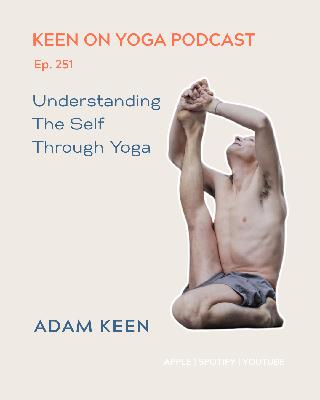
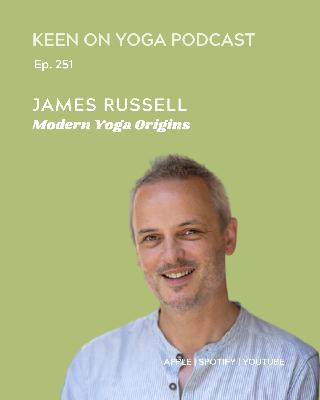

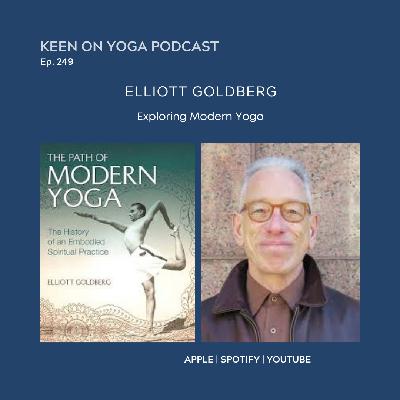
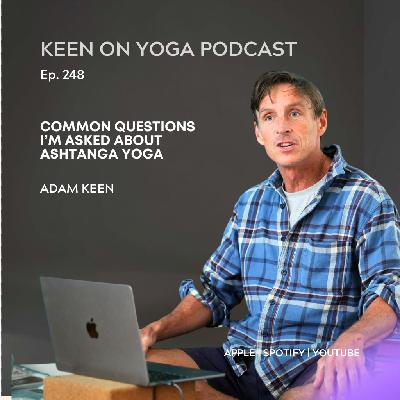
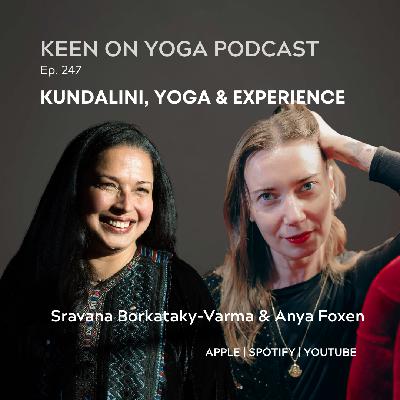
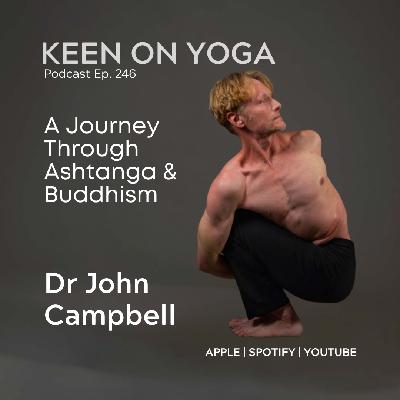
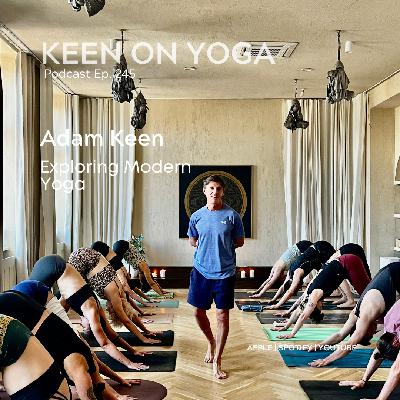

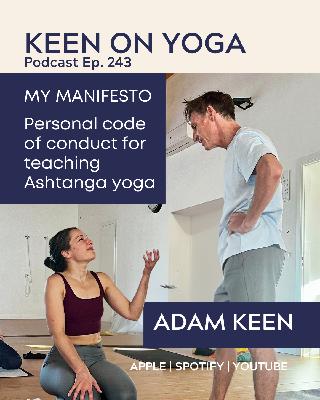
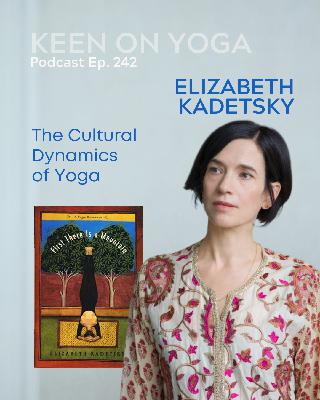
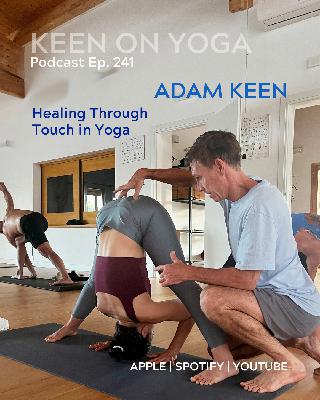
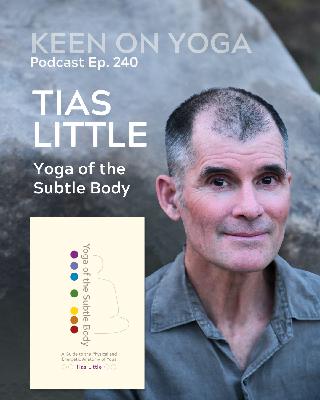
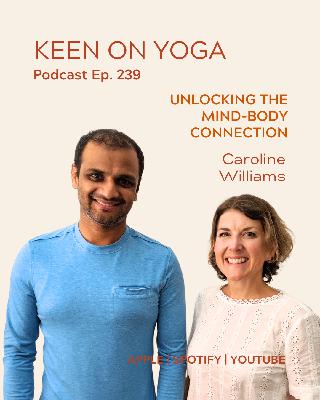
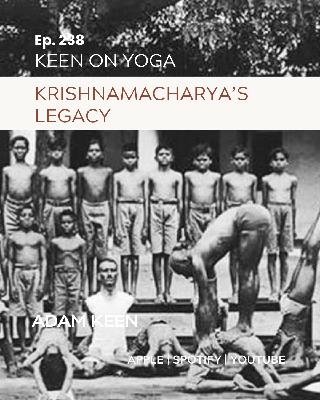
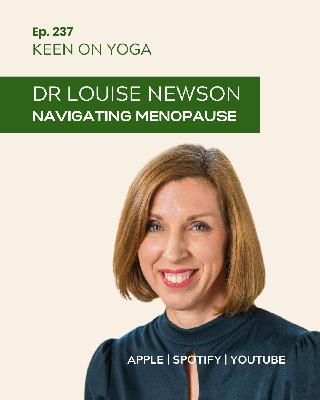

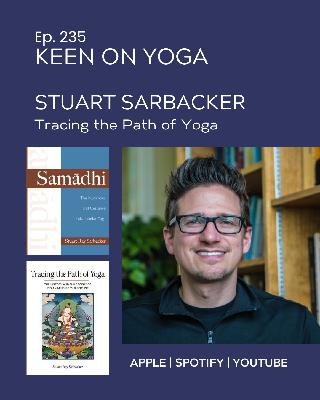
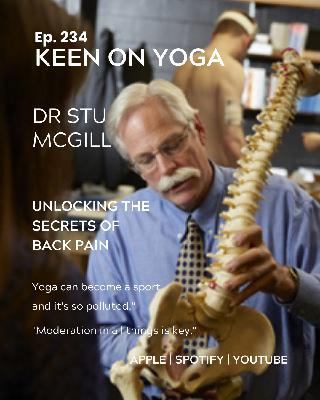




Dearrr u talked a alot! more than ur guest! u did not allow Zoë to speak!